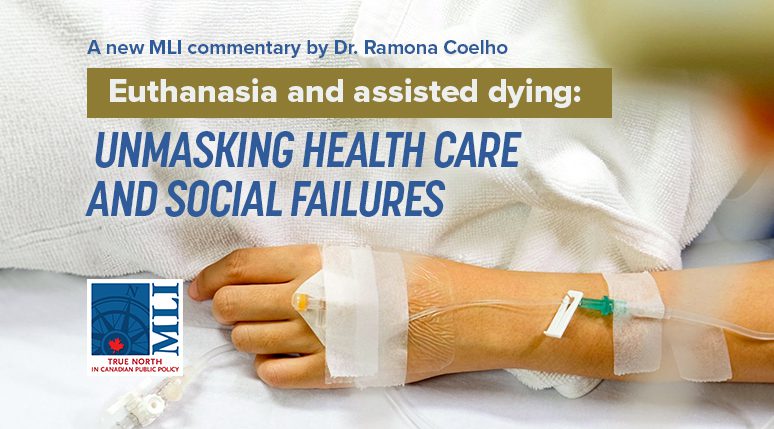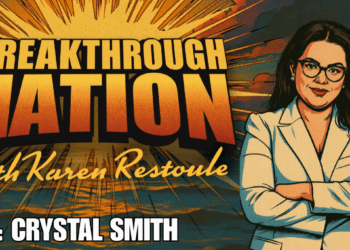By Ramona Coelho
January 8, 2025
In 2016, Canada legalized Medical Assistance in Dying (MAiD), an umbrella term for euthanasia and assisted suicide, presenting it as a compassionate option for those suffering unbearably at the end of their lives. Since its introduction, our system has significantly expanded beyond its original scope. It now includes two distinct pathways: Track 1 for those in the end-of-life context and Track 2 for those who are not dying; people in both groups must meet specified criteria.
Health Canada’s recently released Fifth Annual Report on Medical Assistance in Dying in Canada 2023 reveals that 15,343 individuals died by MAiD, 622 of them following Track 2. By the end of 2023, the cumulative number of MAiD deaths reached 60,000 – 4.7 per cent of all deaths nationally since the program was launched. The annual growth rate continues to rise significantly, at 15.8 per cent.
Regional reported trends highlight extreme increases in growth, with Quebec experiencing a 36.3 per cent increase, Ontario at 30.3 per cent, and British Columbia at 18.0 per cent. These provinces account for 85 per cent of all MAiD provisions. In Quebec, where only euthanasia is allowed, it accounted for more than 7 per cent of all deaths. Quebec’s government recently commissioned a study to better understand why so many people in the province are resorting to euthanasia.
MAiD operates under specific criteria outlined in the Criminal Code, which exempt it from being a crime of homicide or aiding suicide. Euthanasia, which involves a health care provider administering a lethal injection, remains by far the most common form of MAiD, with fewer than five cases involving assisted suicide (self-ingestion) across the rest of Canada in 2023.
Regardless of terminology, what was once intended as a procedure of last resort has become a widely accessed option to die.
Supporters of MAiD often cite autonomy and compassion as validations for the practice. However, as a society, we cannot ignore the troubling reality that, for many individuals, the desire for assisted death can often reflect systemic failures: discrimination, inadequate access to health care, mental health services, disability supports, and social care.
Even the British Columbia Civil Liberties Association (BCCLA), which filed the Carter case that led to the 2015 decriminalization of physician-assisted suicide in Canada, has now expressed concerns about the misuse of MAiD. They acknowledge reports of individuals being offered MAiD in circumstances that might not meet the legal criteria, as well as cases where people may resort to MAiD due to intolerable social conditions, and have asserted that they will hold the government accountable.
As the Health Canada report cites, the overall drivers of intolerable suffering include loneliness and isolation (21 per cent for Track 1 vs. 47 per cent for Track 2), emotional distress, anxiety, fear, or existential suffering (39 per cent for Track 1 vs. 35 per cent for Track 2) and a perceived burden on family, friends or caregivers (45 per cent for Track 1 vs. 49 per cent for Track 2). It is deeply troubling that loneliness, the fear of being a burden, and general fear are leading people to choose death. All of these issues should be addressed with better care, not with the provision of death. When people lack timely access to adequate health care, housing, or proper support – or even simply genuine care and love – offering death as a “choice” is not compassionate, it can be a form of neglect.
The failure to care
Canada prides itself on its image as a nation that values dignity and protects the vulnerable. Yet the reality can be starkly different. Inadequate MAiD safeguards, inaccessible care, and a lack of robust community life have left some individuals – whether at the end of their lives, disabled, mentally ill, or socially deprived – sometimes being presented with euthanasia or assisted suicide when they are at their lowest.
Consider patients in palliative care. Cancer patients, for instance, often face significant barriers to accessing mental health support and proper symptom management. How can a request for MAiD be free and informed when better support isn’t available? Alarmingly, Health Canada suggests that health care providers should consider proactively raising MAiD as an option, but this approach raises serious ethical concerns. Are we genuinely prioritizing care, or are we normalizing death as a default?
This tension illustrates how systemic neglect can muddy the waters of autonomy. When cases of euthanasia are documented for persons whose pain is poorly managed, or whose care is inadequate, is the decision to request MAiD truly autonomous? When feeling like a burden, or when loneliness or fear of prolonged suffering are the factors driving the decision, the choices are not made in true freedom but are borne of anguish and desperation, reflecting the reality of unmet needs. These dynamics demonstrate that suffering can distort autonomy and can turn MAiD into the result of systemic failures rather than an expression of true choice.
Medical Assistance in Dying does not fit into medicine
MAiD does not align with medicine’s core purpose and has been incoherently integrated into medical practice. As Harvey Chochinov and Joseph Fins argue, medicine is fundamentally about healing, restoration, and tailoring care to address specific conditions. In contrast, MAiD offers no pathway to healing; it ends life, removing the possibility of further care, closure, or recovery. Unlike standard medical practice, which relies on evidence-based guidelines and individualized decision-making to manage symptoms and diseases while minimizing harm, MAiD is legislatively mandated, lacks nuance and adaptability, and serves only to end the sufferer’s life.
This overemphasis on autonomy represents a troubling shift in medical ethics. Autonomous choice, when stripped of adequate support and resources, ceases to be a form of empowerment and instead becomes a hollow justification for abandonment and the exercise of privilege and power over consideration of the common good. By focusing on “choice” while failing to address the suffering that underpins it, MAiD shifts the medical profession’s role from healing to facilitating death.
The expansion of MAiD – from individuals who are near the end of their lives to those with disabilities, mental illness (beginning in 2027), and likely soon for those lacking capacity – raises profound questions about how we define medical treatment. Unlike other procedures, performing euthanasia or assisted suicide does not mandate any specialized training, nor are there legislative safeguards ensuring that all of the less invasive or less risky treatments have been thoroughly tried first. This begs the question of whether we are shifting the focus of care from alleviating suffering to merely ending the lives of those who are suffering prematurely.
Engaging in this debate has revealed an interesting dynamic among experts. Mental health professionals often highlight the complexity of their field and the current impossibility of accurately determining whose suffering is truly irremediable. Many argue rightly that MAiD is not an appropriate response to mental illness and advocate for evidence-based care. Disability experts emphasize that their patients often face systemic barriers and unmet needs and that recovery takes time, suggesting that compassion lies in improving support, not offering death. Palliative care specialists stress that end-of-life suffering can be alleviated, provided the resources to provide skillful, holistic care are available, which allows patients and their loved ones to find closure and meaning in their final days. While physical pain can often be effectively managed with medication, the psychological aspects of suffering should be addressed through therapy. Furthermore, choosing death out of fear – whether to avoid future pain, suffering, or material hardships – should be met with compassion and improved support.
The decision to end a life can have unintended and far reaching effects on individuals, families, and society. It risks fostering a perspective that values human lives differently, encouraging a more practical or utilitarian view, that reduces a person’s worth to considerations of cost and convenience. This approach can treat psychological and emotional pain as insurmountable and too challenging to address. However, such suffering can often be meaningfully alleviated through compassionate care, support and help with adjustment. Inserting euthanasia and assisted suicide into medical practice may undermine opportunities for deeper expressions of care, compassion, and commitment—values that are essential for personal and collective societal growth. A health care system that loses sight of these principles risks weakening its core role and society’s broader commitment to care and promoting human flourishing.
What unites these perspectives is a belief in the potential to alleviate suffering through supporting the patient, medical and disability expertise, and investment in care. If future generations of practitioners focus on providing euthanasia and assisted suicide without cultivating the artful skills required to address complex suffering, who will protect vulnerable individuals and ensure they have the opportunity to live well?
This shift from the balancing of ethical principles of medicine to an overemphasis on autonomy reveals a deeper issue: autonomy and choice can displace core principles of healing, patient safety, and alleviation of suffering. Fear, isolation, and a lack of sustained support can make MAiD seem like an appealing option – not because it is the best solution, but because better alternatives are either overlooked due to the limited knowledge or are unavailable and inaccessible.
A fractured social fabric
When life’s challenges feel overwhelming, the compassionate response is to address the underlying causes of suffering – not to quickly offer death. Yet in Canada, as our former Disability Inclusion minister has noted, accessing death through MAiD can be easier than finding adequate social supports or comprehensive care for chronic illness.
According to the Health Canada report, those receiving MAiD under Track 2 were predominantly women (58.5 per cent) and slightly younger than those receiving it via Track 1. Further, the report indicates that proportionally more women than men were living in the lowest-income neighbourhoods (both Tracks 1 and 2). The Health Canada report aims to reassure Canadians by stating that the higher rate of younger women receiving MAiD can simply be linked to, “overall population health trends where women experience longterm chronic illness, which can cause enduring suffering but would not typically make a person’s death reasonably foreseeable.” However, the report fails to mention international research that women are disproportionately affected by intimate partner violence, more likely to receive inadequate medical care, and twice as likely to attempt suicide as men. These women may feel trapped in their suffering, leading them to see euthanasia or assisted suicide as an escape when other supports or interventions are unavailable, effectively replacing suicide prevention efforts with assisted suicide.
Lastly, an unexplained 6.7 per cent of those who died under Track 2 had no fixed address, raising the possibility of housing insecurity, a concern that has recently been underscored in leaked discussions from MAiD practitioner forums. These documented issues highlight that euthanasia and assisted suicide risks preying on systemic neglect and the intersections of gender, poverty, and isolation – conditions that distort the notion of true choice.
Yet, even beyond these marginalized groups, the failure to consider the various factors that make MAiD seem like an appealing option and the failure to attempt to alleviate that suffering may lead individuals to choose death. The core issue can remain the same: a lack of adequate support and a system that mistakenly prioritizes medicalized death as a response to suffering rather than focusing on its alleviation.
A call for compassion
The Health Canada report reads at times like a defence of the MAiD regime, placing greater emphasis on reassuring the public than on sober and fulsome analysis. The report even concludes with what seems like an endorsement for Dying with Dignity’s (DWD) position in a BC court case, which aims to mandate MAiD in all health facilities. The report notes that “institutional objection to MAiD resulting in patient transfers is a fraught issue. Since the legalization of MAiD in 2016, several faith-based hospitals, long-term care facilities, and hospices in Canada have enacted policies to prohibit MAiD from taking place on their premises,” further noting that a relatively high proportion of transfers were made following institutional policies. However, their analysis fails to acknowledge that transfers from facilities with institutional policies are necessary to enable individuals with disabilities to choose care in MAiD-free safe spaces. Further, hospital transfers occur frequently and for a variety of reasons, including patients requiring specialized services. Framing this as a “fraught issue” seemingly reflects ideological bias.
Several disability organizations, supported by the larger disability community, have launched a court challenge to try to limit MAiD. The organizations assert that Track 2 has resulted in premature deaths and an increase in discrimination and stigma towards people with disabilities across the country. While they are not challenging Track 1 in this case, they recognize that it too can pose significant problems for people with disabilities.
Health Canada suggests that even modest delays can interfere with a person’s ability to access MAiD, emphasizing how important it is to avoid hindrances for those seeking it. However, they equally fail to highlight that 41 cases were stopped because external pressures were identified that were driving patients’ requests. In this regard, the report misses a critical point: providers who take the time to deeply understand and address a patient’s suffering may be offering true medical care, even if the patient dies naturally. Euthanasia and assisted suicide, as universal solutions, is a simplistic, cost-effective approach that overlooks the many complexities and challenges that their broad legalization has created.
Compassion does not abandon people to their despair. It does not normalize death as a solution to poorly controlled pain, fear, poverty, loneliness, or inadequate care. It invests in palliative care, mental health services, social support, and community life to make life worth living.
If Canada continues down this path, we are de facto normalizing the idea that some lives are less valuable and less deserving of care and that certain types of people are better off dead. The promise of autonomy can be a front, masking systemic neglect while utilizing the language of choice. Euthanasia and assisted suicide are not compassionate solutions if we have failed to meaningfully address the causes of suffering at its root. A compassionate society does not encourage its citizens to choose death simply because it has failed to help them live.
About the Author
Dr. Ramona Coelho is a family physician serving marginalized persons in London, Ontario. She is a senior fellow of domestic and health policy at the Macdonald-Laurier Institute and co-editor of the upcoming book Unravelling MAiD in Canada: Euthanasia and Assisted Suicide as Medical Care.






